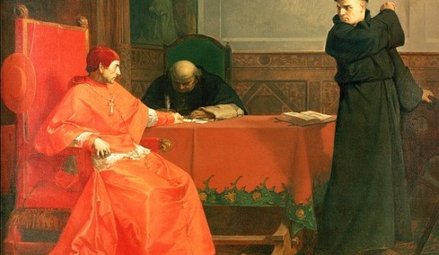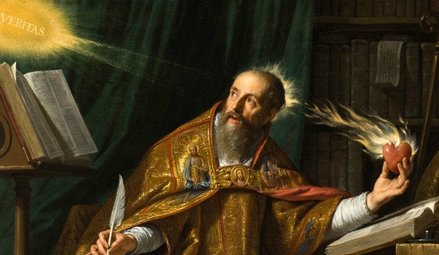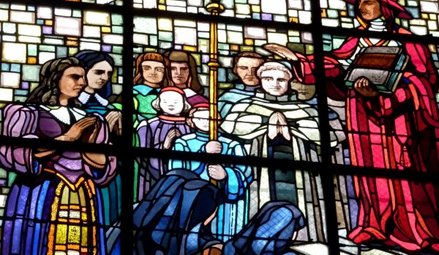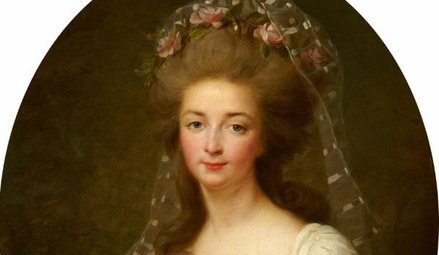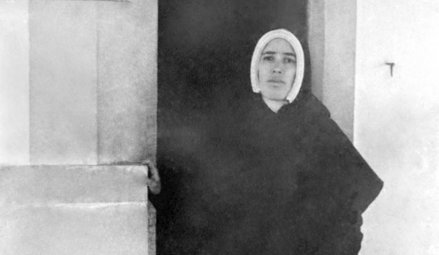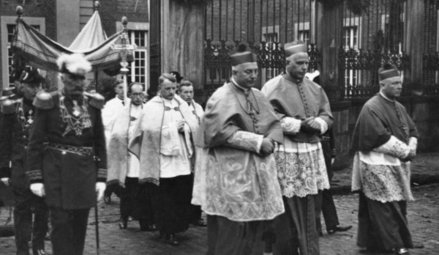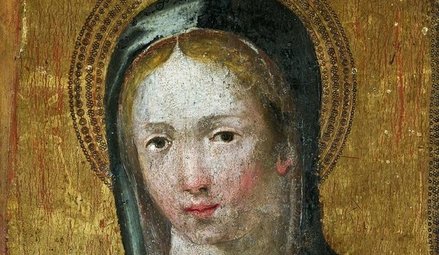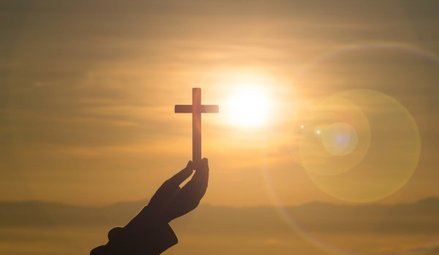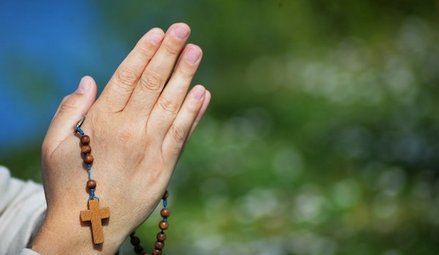- By theme
- Jesus
- The many proofs of Christ’s resurrection
- Saint Thomas Aquinas: God gave all the divine proofs we needed to believe
- The surpassing power of Christ's word
- Lewis’s trilemma: a proof of Jesus’s divinity
- God saves: the power of the holy name of Jesus
- Jesus spoke and acted as God's equal
- Jesus' divinity is actually implied in the Koran
- Jesus came at the perfect time of history
- Rabbinical sources testify to Jesus' miracles
- Mary
- The Church
- The Bible
- An enduring prophecy and a series of miraculous events preventing the reconstruction of the Temple
- The authors of the Gospels were either eyewitnesses or close contacts of those eyewitnesses
- Onomastics support the historical reliability of the Gospels
- The New Testament was not altered
- The New Testament is the best-attested manuscript of Antiquity
- The Gospels were written too early after the facts to be legends
- Archaeological finds confirm the reliability of the New Testament
- The criterion of embarrassment proves that the Gospels tell the truth
- The dissimilarity criterion strengthens the case for the historical reliability of the Gospels
- 84 details in Acts verified by historical and archaeological sources
- The unique prophecies that announced the Messiah
- The time of the coming of the Messiah was accurately prophesied
- The prophet Isaiah's ultra accurate description of the Messiah's sufferings
- Daniel's "Son of Man" is a portrait of Christ
- The Apostles
- Saint Peter, prince of the apostles
- Saint John the Apostle: an Evangelist and Theologian who deserves to be better known (d. 100)
- Saint Matthew, apostle, evangelist and martyr (d. 61)
- James the Just, “brother” of the Lord, apostle and martyr (d. 62 AD)
- Saint Matthias replaces Judas as an apostle (d. 63)
- The martyrs
- The protomartyr Saint Stephen (d. 31)
- Polycarp, bishop of Smyrna, disciple of John and martyr (d. 155)
- Justin Martyr: philosopher and apologist (d.165)
- Saint Blandina and the Martyrs of Lyon: the fortitude of faith (177 AD)
- Saint Agatha stops a volcano from destroying the city of Catania (d. 251)
- Saint Lucy of Syracuse, virgin and martyr for Christ (d. 304)
- Saint Boniface propagates Christianity in Germany (d. 754)
- Thomas More: “The king’s good servant, but God’s first”
- The martyrdom of Paul Miki and his companions (d. 1597)
- The martyrs of Angers and Avrillé (1794)
- The Martyrs of Compiègne (1794)
- The Vietnamese martyrs Father Andrew Dung-Lac and his 116 companions (17th-19th centuries)
- He braved torture to atone for his apostasy (d. 1818)
- Blaise Marmoiton: the epic journey of a missionary to New Caledonia (d. 1847)
- The Uganda martyrs: a recurring pattern in the persecution of Christians (1885)
- José Luis Sanchez del Rio, martyred at age 14 for Christ the King (d. 1928)
- Saint Maximilian Kolbe, Knight of the Immaculate (d. 1941)
- The monks
- The Desert Fathers (3rd century)
- Saint Anthony of the Desert, a father of monasticism (d. 356)
- Saint Benedict, father of Western monasticism (d. 550)
- Saint Bruno the Carthusian (d.1101): the miracle of a hidden life
- Blessed Angelo Agostini Mazzinghi: the Carmelite with flowers pouring from his mouth (d. 1438)
- Monk Abel of Valaam's accurate prophecies about Russia (d. 1841)
- The more than 33,000 miracles of Saint Charbel Maklouf (d. 1898)
- Saint Pio of Pietrelcina (d. 1968): How God worked wonders through "a poor brother who prays"
- The surprising death of Father Emmanuel de Floris (d. 1992)
- The prophecies of Saint Paisios of Mount Athos (d. 1994)
- The saints
- Saints Anne and Joachim, parents of the Virgin Mary (19 BC)
- Saint Nazarius, apostle and martyr (d. 68 or 70)
- Ignatius of Antioch: successor of the apostles and witness to the Gospel (d. 117)
- Saint Gregory the Miracle-Worker (d. 270)
- Saint Martin of Tours: patron saint of France, father of monasticism in Gaul, and the first great leader of Western monasticism (d. 397)
- Saint Augustine of Canterbury evangelises England (d. 604)
- Saint Lupus, the bishop who saved his city from the Huns (d. 623)
- Saint Rainerius of Pisa: from musician to merchant to saint (d. 1160)
- Saint Dominic of Guzman (d.1221): an athlete of the faith
- Saint Francis, the poor man of Assisi (d. 1226)
- Saint Anthony of Padua: "everyone’s saint"
- Saint Rose of Viterbo or How prayer can transform the world (d. 1252)
- Saint Simon Stock receives the scapular of Mount Carmel from the hands of the Virgin Mary
- The unusual boat of Saint Basil of Ryazan
- Saint Agnes of Montepulciano's complete God-confidence (d. 1317)
- The extraordinary conversion of Michelina of Pesaro
- Saint Peter Thomas (d. 1366): a steadfast trust in the Virgin Mary
- Saint Rita of Cascia: hoping against all hope
- Saint Catherine of Genoa and the Fire of God's love (d. 1510)
- Saint Anthony Mary Zaccaria, physician of bodies and souls (d. 1539)
- Saint Ignatius of Loyola (d. 1556): "For the greater glory of God"
- Brother Alphonsus Rodríguez, SJ: the "holy porter" (d. 1617)
- Martin de Porres returns to speed up his beatification (d. 1639)
- Virginia Centurione Bracelli: When God is the only goal, all difficulties are overcome (d.1651)
- Saint Marie of the Incarnation, "the Teresa of New France" (d.1672)
- St. Francis di Girolamo's gift of reading hearts and souls (d. 1716)
- Rosa Venerini: moving in the ocean of the Will of God (d. 1728)
- Saint Jeanne-Antide Thouret: heroic perseverance and courage (d. 1826)
- Seraphim of Sarov (1759-1833): the purpose of the Christian life is to acquire the Holy Spirit
- Camille de Soyécourt, filled with divine fortitude (d. 1849)
- Bernadette Soubirous, the shepherdess who saw the Virgin Mary (1858)
- Saint John Vianney (d. 1859): the global fame of a humble village priest
- Gabriel of Our Lady of Sorrows, the "Gardener of the Blessed Virgin" (d. 1862)
- Father Gerin, the holy priest of Grenoble (1863)
- Blessed Francisco Palau y Quer: a lover of the Church (d. 1872)
- Saints Louis and Zelie Martin, the parents of Saint Therese of Lisieux (d. 1894 and 1877)
- The supernatural maturity of Francisco Marto, “contemplative consoler of God” (d. 1919)
- Saint Faustina, apostle of the Divine Mercy (d. 1938)
- Brother Marcel Van (d.19659): a "star has risen in the East"
- Doctors
- The mystics
- Lutgardis of Tongeren and the devotion to the Sacred Heart
- Saint Angela of Foligno (d. 1309) and "Lady Poverty"
- Saint John of the Cross: mystic, reformer, poet, and universal psychologist (+1591)
- Blessed Anne of Jesus: a Carmelite nun with mystical gifts (d.1621)
- Catherine Daniélou: a mystical bride of Christ in Brittany
- Saint Margaret Mary sees the "Heart that so loved mankind"
- Jesus makes Maria Droste zu Vischering the messenger of his Divine Heart (d. 1899)
- Mother Yvonne-Aimée of Jesus' predictions concerning the Second World War (1922)
- Sister Josefa Menendez, apostle of divine mercy (d. 1923)
- Edith Royer (d. 1924) and the Sacred Heart Basilica of Montmartre
- Rozalia Celak, a mystic with a very special mission (d. 1944)
- Visionaries
- Saint Perpetua delivers her brother from Purgatory (203)
- María de Jesús de Ágreda, abbess and friend of the King of Spain
- Discovery of the Virgin Mary's house in Ephesus (1891)
- Sister Benigna Consolata: the "Little Secretary of Merciful Love" (d. 1916)
- Maria Valtorta's visions match data from the Israel Meteorological Service (1943)
- Berthe Petit's prophecies about the two world wars (d. 1943)
- Maria Valtorta saw only one pyramid at Giza in her visions... and she was right! (1944)
- The location of Saint Peter's village seen in a vision before its archaeological discovery (1945)
- The 700 extraordinary visions of the Gospel received by Maria Valtorta (d. 1961)
- The amazing geological accuracy of Maria Valtorta's writings (d. 1961)
- Maria Valtorta's astronomic observations consistent with her dating system
- Discovery of an ancient princely house in Jerusalem, previously revealed to a mystic (d. 1961)
- Mariette Kerbage, the seer of Aleppo (1982)
- The 20,000 icons of Mariette Kerbage (2002)
- The popes
- The great witnesses of the faith
- Saint Augustine's conversion: "Why not this very hour make an end to my uncleanness?" (386)
- Thomas Cajetan (d. 1534): a life in service of the truth
- Madame Acarie, "the servant of the servants of God" (d. 1618)
- Blaise Pascal (d.1662): Biblical prophecies are evidence
- Madame Élisabeth and the sweet smell of virtue (d. 1794)
- Jacinta, 10, offers her suffering to save souls from hell (d. 1920)
- Father Jean-Édouard Lamy: "another Curé of Ars" (d. 1931)
- Christian civilisation
- The depth of Christian spirituality
- John of the Cross' Path to perfect union with God based on his own experience
- The dogma of the Trinity: an increasingly better understood truth
- The incoherent arguments against Christianity
- The "New Pentecost": modern day, spectacular outpouring of the Holy Spirit
- The Christian faith explains the diversity of religions
- Cardinal Pierre de Bérulle (d.1629) on the mystery of the Incarnation
- Christ's interventions in history
- Marian apparitions and interventions
- The Life-giving Font of Constantinople
- Apparition of Our Lady of La Treille in northern France: prophecy and healings (600)
- Our Lady of Virtues saves the city of Rennes in Bretagne (1357)
- Mary stops the plague epidemic at Mount Berico (1426)
- Our Lady of Miracles heals a paralytic in Saronno (1460)
- Cotignac: the first apparitions of the Modern Era (1519)
- Savona: supernatural origin of the devotion to Our Lady of Mercy (1536)
- The Virgin Mary delivers besieged Christians in Cusco, Peru
- The victory of Lepanto and the feast of Our Lady of the Rosary (1571)
- The apparitions to Brother Fiacre (1637)
- The “aldermen's vow”, or the Marian devotion of the people of Lyon (1643)
- Our Lady of Nazareth in Plancoët, Brittany (1644)
- Our Lady of Laghet (1652)
- Saint Joseph’s apparitions in Cotignac, France (1660)
- Heaven confides in a shepherdess of Le Laus (1664-1718)
- Zeitoun, a two-year miracle (1968-1970)
- The Holy Name of Mary and the major victory of Vienna (1683)
- Heaven and earth meet in Colombia: the Las Lajas shrine (1754)
- The five Marian apparitions that traced an "M" over France, and its new pilgrimage route
- A series of Marian apparitions and prophetic messages in Ukraine since the 19th century (1806)
- "Consecrate your parish to the Immaculate Heart of Mary" (1836)
- At La Salette, Mary wept in front of the shepherds (1846)
- Our Lady of Champion, Wisconsin: the first and only approved apparition of Mary in the US (1859)
- Gietrzwald apparitions: heavenly help to a persecuted minority
- The silent apparition of Knock Mhuire in Ireland (1879)
- Mary "Abandoned Mother" appears in a working-class district of Lyon, France (1882)
- The thirty-three apparitions of the Virgin Mary in Beauraing (1932)
- "Our Lady of the Poor" appears eight times in Banneux (1933)
- Fontanelle-Montichiari apparitions of Our Lady "Rosa Mystica" (1947)
- Mary responds to the Vows of the Polish Nation (1956)
- Zeitoun apparitions
- The Virgin Mary comes to France's rescue by appearing at L'Ile Bouchard (1947)
- Maria Esperanza Bianchini and Mary, Mary, Reconciler of Peoples and Nations (1976)
- Luz Amparo and the El Escorial apparitions
- The extraordinary apparitions of Medjugorje and their worldwide impact
- The Virgin Mary prophesied the 1994 Rwandan genocide (1981)
- Our Lady of Soufanieh's apparition and messages to Myrna Nazzour (1982)
- The Virgin Mary heals a teenager, then appears to him dozens of times (1986)
- Seuca, Romania: apparitions and pleas of the Virgin Mary, "Queen of Light" (1995)
- Angels and their manifestations
- Mont Saint-Michel: Heaven watching over France
- The revelation of the hymn Axion Estin by the Archangel Gabriel (982)
- Angels give a supernatural belt to the chaste Thomas Aquinas (1243)
- The constant presence of demons and angels in the life of St Frances of Rome (d. 1440)
- Mother Yvonne-Aimée escapes from prison with the help of an angel (1943)
- Saved by Angels: The Miracle on Highway 6 (2008)
- Exorcisms in the name of Christ
- A wave of charity unique in the world
- Saint Peter Nolasco: a life dedicated to ransoming enslaved Christians (d. 1245)
- Rita of Cascia forgives her husband's murderer (1404)
- Saint Angela Merici: Christ came to serve, not to be served (d. 1540)
- Saint John of God: a life dedicated to the care of the poor, sick and those with mental disorders (d. 1550)
- Saint Camillus de Lellis, reformer of hospital care (c. 1560)
- Blessed Alix Le Clerc, encouraged by the Virgin Mary to found schools (d. 1622)
- Saint Vincent de Paul (d. 1660), apostle of charity
- Marguerite Bourgeoys, Montreal's first teacher (d. 1700)
- Frédéric Ozanam, inventor of the Church's social doctrine (d. 1853)
- Damian of Molokai: a leper for Christ (d. 1889)
- Pier Giorgio Frassati (d.1925): heroic charity
- Saint Dulce of the Poor, the Good Angel of Bahia (d. 1992)
- Mother Teresa of Calcutta (d. 1997): an unshakeable faith
- Heidi Baker: Bringing God's love to the poor and forgotten of the world
- Amazing miracles
- The miracle of liquefaction of the blood of St. Januarius (d. 431)
- The miracles of Saint Anthony of Padua (d. 1231)
- Saint Pius V and the miracle of the Crucifix (1565)
- Saint Philip Neri calls a teenager back to life (1583)
- The resurrection of Jérôme Genin (1623)
- Saint Francis de Sales brings back to life a victim of drowning (1623)
- Saint John Bosco and the promise kept beyond the grave (1839)
- The day the sun danced at Fatima (1917)
- Pius XII and the miracle of the sun at the Vatican (1950)
- When Blessed Charles de Foucauld saved a young carpenter named Charle (2016)
- Reinhard Bonnke: 89 million conversions (d. 2019)
- Miraculous cures
- The royal touch: the divine thaumaturgic gift granted to French and English monarchs (11th-19th centuries)
- With 7,500 cases of unexplained cures, Lourdes is unique in the world (1858-today)
- Our Lady at Pellevoisin: "I am all merciful" (1876)
- Mariam, the "little thing of Jesus": a saint from East to West (d.1878)
- The miraculous healing of Marie Bailly and the conversion of Dr. Alexis Carrel (1902)
- Gemma Galgani: healed to atone for sinners' faults (d. 1903)
- The miraculous cure of Blessed Maria Giuseppina Catanea
- The extraordinary healing of Alice Benlian in the Church of the Holy Cross in Damascus (1983)
- The approved miracle for the canonization of Juan Diego Cuauhtlatoatzin (1990)
- Healed by St Charbel Makhlouf, her scars bleed each month for the benefit of unbelievers (1993)
- The miracle that led to Brother André's canonisation (1999)
- Bruce Van Natta's intestinal regrowth: an irrefutable miracle (2007)
- He had “zero” chance of living: a baby's miraculous recovery (2015)
- Manouchak, operated on by Saint Charbel (2016)
- How Maya was cured from cancer at Saint Charbel's tomb (2018)
- Preserved bodies of the saints
- Dying in the odour of sanctity
- The body of Saint Cecilia found incorrupt (d. 230)
- Saint Claudius of Besançon: a quiet leader, a calm presence, and a strong belief in the value of prayer (d. 699)
- Stanislaus Kostka's burning love for God (d. 1568)
- Saint Germaine of Pibrac: God's little Cinderella (d. 1601)
- Blessed Antonio Franco, bishop and defender of the poor (d. 1626)
- Giuseppina Faro, servant of God and of the poor (d. 1871)
- The incorrupt body of Marie-Louise Nerbollier, the visionary from Diémoz (d. 1910)
- The great exhumation of Saint Charbel (1950)
- Bilocations
- Inedias
- Levitations
- Lacrimations and miraculous images
- Saint Juan Diego's tilma (1531)
- The Rue du Bac apparitions of the Virgin Mary to St. Catherine Labouré (Paris, 1830)
- Mary weeps in Syracuse (1953)
- Teresa Musco (d.1976): salvation through the Cross
- Soufanieh: A flow of oil from an image of the Virgin Mary, and oozing of oil from the face and hands of Myrna Nazzour (1982)
- The Saidnaya icon exudes a wonderful fragrance (1988)
- Our Lady weeps in a bishop's hands (1995)
- Stigmates
- The venerable Lukarda of Oberweimar shares her spiritual riches with her convent (d. 1309)
- Florida Cevoli: a heart engraved with the cross (d. 1767)
- Blessed Maria Grazia Tarallo, mystic and stigmatist (d. 1912)
- Saint Padre Pio: crucified by Love (1918)
- Elena Aiello: "a Eucharistic soul"
- A Holy Triduum with a Syrian mystic, witnessing the sufferings of Christ (1987)
- A Holy Thursday in Soufanieh (2004)
- Eucharistic miracles
- Lanciano: the first and possibly the greatest Eucharistic miracle (750)
- A host came to her: 11-year-old Imelda received Communion and died in ecstasy (1333)
- Faverney's hosts miraculously saved from fire
- A tsunami recedes before the Blessed Sacrament (1906)
- Buenos Aires miraculous host sent to forensic lab, found to be heart muscle (1996)
- Relics
- The Veil of Veronica, known as the Manoppello Image
- For centuries, the Shroud of Turin was the only negative image in the world
- The Holy Tunic of Argenteuil's fascinating history
- Saint Louis (d. 1270) and the relics of the Passion
- The miraculous rescue of the Shroud of Turin (1997)
- A comparative study of the blood present in Christ's relics
- Jews discover the Messiah
- Francis Xavier Samson Libermann, Jewish convert to Catholicism (1824)
- Our Lady of the Miraculous Medal and the conversion of Alphonse Ratisbonne (1842)
- Max Jacob: a liberal gay Jewish artist converts to Catholicism (1909)
- Edith Stein - Saint Benedicta of the Cross: "A daughter of Israel who, during the Nazi persecutions, remained united with faith and love to the Crucified Lord, Jesus Christ, as a Catholic, and to her people as a Jew"
- Patrick Elcabache: a Jew discovers the Messiah after his mother is miraculously cured in the name of Jesus
- Olivier's conversion story: from Pesach to the Christian Easter (2000)
- Cardinal Aron Jean-Marie Lustiger (d. 2007): Chosen by God
- Muslim conversions
- He met Jesus while looking for Muhammad (1990)
- Selma's journey to baptism (1996)
- Soumia, converted to Jesus as she hears Christmas carols (2003)
- How Aïsha, a Muslim convert, found Jesus (2004)
- Amir chooses Christ, at the risk of becoming homeless (2004)
- Souad Brahimi: brought to Jesus by Mary (2012)
- Pursued by God: Khadija's story (2023)
- Buddhist conversions
- Atheist conversions
- The conversion of an executioner during the Terror (1830)
- God woos a poet's heart: the story of Paul Claudel's conversion (1886)
- From agnostic to Catholic Trappist monk (1909)
- Dazzled by God: Madeleine Delbrêl's story (1924)
- C.S. Lewis, the reluctant convert (1931)
- The day André Frossard met Christ in Paris (1935)
- MC Solaar's rapper converts after experiencing Jesus' pains on the cross
- Father Sébastien Brière, converted at Medjugorje (2003)
- Franca Sozzani, the "Pope of fashion" who wanted to meet the Pope (2016)
- Nelly Gillant: from Reiki Master to Disciple of Christ (2018)
- Testimonies of encounters with Christ
- Near-death experiences (NDEs) confirm Catholic doctrine on the Four Last Things
- The NDE of Saint Christina the Astonishing, a source of conversion to Christ (1170)
- Jesus audibly calls Alphonsus Liguori to follow him (1723)
- Blessed Dina Bélanger (d. 1929): loving God and letting Jesus and Mary do their job
- Gabrielle Bossis: He and I
- André Levet's conversion in prison
- Journey between heaven and hell: a "near-death experience" (1971)
- Jesus' message to Myrna Nazzour (1984)
- Alicja Lenczewska: conversations with Jesus (1985)
- Vassula Ryden and the "True Life in God" (1985)
- Nahed Mahmoud Metwalli: from persecutor to persecuted (1987)
- The Bible verse that converted a young Algerian named Elie (2000)
- Invited to the celestial court: the story of Chantal (2017)
- Providential stories
- The superhuman intuition of Saint Pachomius the Great
- Ambrose of Milan finds the bodies of the martyrs Gervasius and Protasius (386)
- Germanus of Auxerre's prophecy about Saint Genevieve's future mission, and protection of the young woman (446)
- Seven golden stars reveal the future location of the Grande Chartreuse Monastery (1132)
- The supernatural reconciliation of the Duke of Aquitaine (1134)
- Saint Zita and the miracle of the cloak (13th c.)
- Joan of Arc: "the most beautiful story in the world"
- John of Capistrano saves the Church and Europe (1456)
- A celestial music comforts Elisabetta Picenardi on her deathbed (d. 1468)
- Gury of Kazan: freed from his prison by a "great light" (1520)
- The strange adventure of Yves Nicolazic (1623)
- Julien Maunoir miraculously learns Breton (1626)
- Pierre de Keriolet: with Mary, one cannot be lost (1636)
- How Korea evangelized itself (18th century)
- A hundred years before it happened, Saint Andrew Bobola predicted that Poland would be back on the map (1819)
- The prophetic poem about John Paul II (1840)
- Don Bosco's angel dog: Grigio (1854)
- The purifying flames of Sophie-Thérèse de Soubiran La Louvière (1861)
- Thérèse of Lisieux saved countless soldiers during the Great War
- Lost for over a century, a Russian icon reappears (1930)
- In 1947, a rosary crusade liberated Austria from the Soviets (1946-1955)
- The discovery of the tomb of Saint Peter in Rome (1949)
- He should have died of hypothermia in Soviet jails (1972)
- God protects a secret agent (1975)
- Flowing lava stops at church doors (1977)
- A protective hand saved John Paul II and led to happy consequences (1981)
- Mary Undoer of Knots: Pope Francis' gift to the world (1986)
- Edmond Fricoteaux's providential discovery of the statue of Our Lady of France (1988)
- The Virgin Mary frees a Vietnamese bishop from prison (1988)
- The miracles of Saint Juliana of Nicomedia (1994)
- Global launch of "Pilgrim Virgins" was made possible by God's Providence (1996)
- The providential finding of the Mary of Nazareth International Center's future site (2000)
- Syrian Monastery shielded from danger multiple times (2011-2020)
- Jesus
- Who are we?
- Make a donation
EVERY REASON TO BELIEVE
Les grands témoins de la foi
n°254
Portugal
20 February 1920
Jacinta, 10, offers her suffering to save souls from hell
At Fatima in 1917, Our Lady said to three young shepherds: "Sacrifice yourselves for sinners". Then, to make them understand better what sin is, its extreme seriousness and its eternal consequences, she showed them hell and the damned. Brief as it was, this vision would never fade from the memory of the three visionaries of Fatima, especially the youngest, seven-year-old Jacinta Marto. Until her premature death on 20 February 1920, Jacinta decided to offer all her sufferings to save as many sinners as possible from damnation.
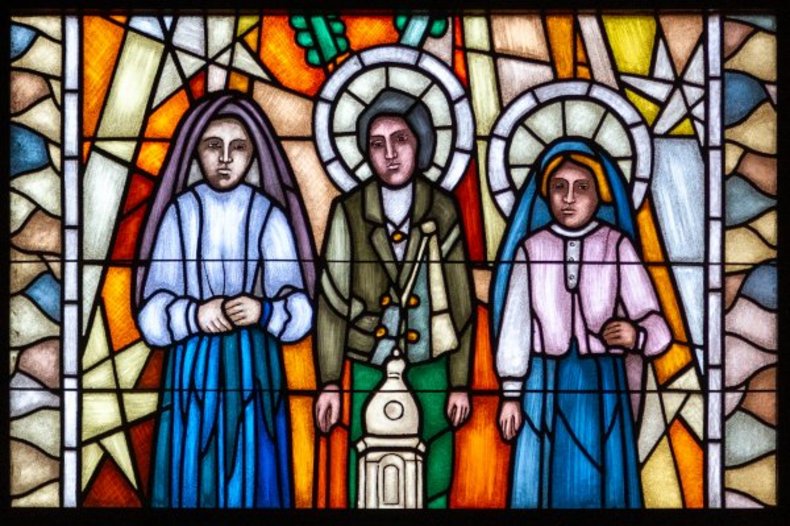
Stained glass window depicting the three shepherd children of Fatima, at the sanctuary of Our Lady of Tylicz, Poland / © Shutterstock, Adam Jan Figel.
Reasons to believe:
- Becoming the confidante and messenger of Our Lady of the Rosary profoundly transformed Jacinta's daily behaviour and character. This change was noticed by everyone around her, suggesting that the little girl had indeed seen and spoken to the Virgin Mary.
In fact, from the second apparition of the Virgin, on 13 June 1917, Jacinta was transformed, because she had had a revelation of the immense love that overflows from Mary's immaculate heart - "the heart of our dear Mother in Heaven", she said in her childlike expression. From then on, her innocent pleasures - playing, dancing, singing - no longer held any interest for her, and she would never worry about them again, absorbed as she was in contemplating the mysteries she had glimpsed. Her parents were astonished that such a young child should spend her time in prayer, failing to understand that she was ablaze with love for Our Lady and longing for the splendors of Heaven.
Consumed with compassion, Jacinta repeated over and over: "My God, how I pity those who are going to hell!" It would be inconceivable that the trauma provoked in her by the vision of hell was a memory of images seen elsewhere in the past. The appalling description given by the children corresponds to the reality of the demonic kingdom and the eternal, excruciating suffering of the souls that are consumed there like burning coals - striking images that the children could not have invented. The only representation of hell that the children knew, before the apparitions of the Virgin, was a mediocre painting in the parish church, with red tones and grimacing figures.
Jacinta wanted to fulfil the Lady's requests for people to pray and sacrifice themselves to save sinners from hell. This mission was obviously beyond the physical, moral and spiritual strength of such a little girl. But Jacinta did not mince words: she really prayed, sacrificing herself totally to save souls and console Jesus. From then on, she refused to indulge in anything greedy or distracting. Even during her illness - she contracted Spanish flu - she didn't allow herself any indulgences, continued to fast and, as long as she was able to stand, went to mass every day "for those who never go, not even on Sundays". All this went far beyond what you would expect from a girl of eight or nine, and only supernatural graces can explain how she maintained this frightening penitential effort until her death.
- That Jacinta, an ordinary little girl of less than ten years of age, took on the role of reparation and expiation - one of the most difficult and painful mystical vocations, reserved for a few privileged, adult souls - is proof of the reality of the Fatima apparitions, and of hell. She devoted herself to this call with incredible generosity.
- After showing them what hell is, the Virgin promised the children that they would be saved from it. She foretold the Marto children (Francisco and Jacinta) that she would soon come to take them to Heaven. Far from being frightened by this, the siblings rejoiced, while their cousin Lucia, whose mission was to spread the message of Fatima and who would die at a very old age, wept with disappointment and sorrow at this announcement which most people would rejoice at. This underlines their faith, so firmly anchored in eternal life and the salvation of their souls.
Our Lady's prediction came true. In October 1918, a year after the last apparition on 13 October 1917 and the dazzling Miracle of the Sun, Francisco and Jacinta caught the Spanish flu. The little boy died of it on 4 April 1919, telling his mother in tears: "Mama, can't you see this magnificent light?"
As death approached, Jacinta suffered constant pain. The little patient rejoiced instead of complaining, saying: "I love telling Jesus that I love him so much! I love suffering so much to please him!" This was not masochism, but an oblation of her whole person to God's will for her. Here again, special and particular graces are needed to explain it, especially at that age.
On 16 February, Our Lady appeared to her in the hospital to announce the end of her ordeal: "I will soon come to get you. But from now on, I'm taking away all your suffering". Without any medical justification, the child's pain, aggravated by the useless operation, stopped and never returned. The nursing staff observed this without being able to explain it.
On the evening of 20 February, Jacinta called the nurse on duty and said gravely: "Sister, I know I'm going to die. Please call a priest". She did indeed die at around ten o'clock in the evening, shortly after the priest had left, as she had said she would. The marvellous perfumes that immediately wafted from her body lasted until her burial in Vila Nova de Ourem, and were still noticeable when her remains were transferred to Fatima in 1935.
Summary:
Born on 11 March 1910, Jacinta Marto was the youngest of eight children. Until the days before her first apparitions, Jacinta was known to sometimes be fussy and sulk when she couldn't have it her way. On the other hand, she was kind and cheerful. She loved to laugh, dance and sing all day long. In other words, she was a completely normal child.
Jacinta, her brother Francisco and her cousin Lucia received apparitions from Our Lady of the Rosary in Fatima, Portugal, between 13 May and 13 October 1917. During the third apparition, Our Lady said to them: "Sacrifice yourselves for sinners". Then she opened her hands, and the light that radiated from them "seemed to penetrate the earth", revealing an ocean of fire, where the children clearly saw demons and the souls of the damned, "like transparent embers, black or bronze, in human form", "floating in this fire, lifted up by the flames that came out of themselves" amid shrieks, screams and complaints "that horrified us and made us tremble with fear". It was a vision striking enough "to make you die of horror and fear".
Fortunately for the children, the eldest of whom, Lucia Dos Santos, was only ten years old, this vision lasted only a few seconds, after which the Lady explained: "You have seen hell, where the souls of poor sinners go. To save them, God wants to establish devotion to my Immaculate Heart in the world. If people do what I am going to tell you, many souls will be saved and there will be peace." On 13 August, Mary added: "Pray, pray a lot and make sacrifices for sinners, as many souls go to hell because no one prays and sacrifices for them."
Jacinta, her brother and her cousin understood - with a clear-sightedness that few people have - the extraordinary greatness of divine love, the seriousness of sin, which offends this loving God, the need for justice to match the crimes, and therefore hell, and eternal punishment for those who have deliberately chosen to reject God, his love and his forgiveness. The three children were entrusted with complementary missions that corresponded to their own spirituality.
Distressed by the ingratitude of men towards the sufferings of Christ and their refusal to respond to the love of the Sacred Heart, Francisco chose to make reparation for those who do not love, pray or sacrifice, by spending his life "consoling Jesus"; Lucia's mission was to spread the message of Fatima; as for little Jacintha, overwhelmed by the vision of hell and the tragic fate of the damned, who fall into it "like snowflakes", she decided to save as many as possible by obeying Mary's request to pray and make sacrifices for them.
From then on, she imposed penances and sacrifices on herself that were beyond the capacity of a nine-year-old child and, even when she fell very ill, refused to relax her penitential lifestyle. Her condition continued to worsen, causing her terrible suffering, which she accepted and offered with a constancy and generosity that few adults are capable of.
Generous donors, made aware of Jacinta's condition, paid for the treatment they hoped would save her, but the ineffective medical treatment, instead of healing her damaged lungs, opened an incurable wound in her ribs that would never close, causing her constant, excruciating pain. Although she kept repeating that she was going to die, since the Blessed Virgin had told her so, doctors persisted in treating her. In mid-January 1920, an eminent doctor, Dr Lisboa, said he could save her if she were transferred to his hospital in Lisbon, by attempting a last-chance operation, which was painful and risky, but which he guaranteed would be successful.
When she left Fatima for the capital, Jacintha knew that she would never return and that she would die alone in Lisbon, deprived of the affection and support of her family and feeling abandoned. She accepted this too, offering it for the salvation of sinners. On 10 February, she had to be operated on without anaesthetic because she was too weak to tolerate it. The medical staff who carried out the excruciating curettage could not understand how a child could endure such an ordeal, which was also pointless, as no human efforts could save her. Jacinta told them: "Patience... One has to suffer more to get to Heaven." No one understood how she could endure any more, and no pain medication could relieve her sufferings.
On the evening of 20 February, she was resting in a room in the infirmary of the Our-Lady-of-Miracles orphanage. Suddenly, she called the nurse on duty, Sister Mary of the Purification, and said gravely to her: "Sister, I know I'm going to die. Please call a priest." Knowing who the child entrusted to her care was, the nun called the chaplain, who heard the little girl's confession but refused her the viaticum, saying that she wasn't going to die straight away and that she would receive communion the next day. Then he left, without hearing the little girl's pleading voice: "Tomorrow I'll be dead...", depriving Jacinta of the only consolation she allowed herself, the Eucharist - a last spiritual suffering she accepted.
Jacinta died alone, around ten o'clock in the evening, shortly after the priest had left, as she had said she would. Wonderful perfumes immediately wafted from her martyred body, lingering until her burial in Vila Nova de Ourem, and were still perceived when her remains were transferred to Fatima in 1935.
Anne Bernet is a Church History specialist, postulator of a cause for beatification and journalist for a number of Catholic media. She has written over forty books, most of them devoted to sanctity.
Going further:
The Shepherds of Fátima by M. Fernando Silva, Pauline Books & Media (December 1, 2008)
More information:Our Lady Came to Fatima (Vision Books) by Ruth Fox Hume, Ignatius Press (July 28, 2005)
The Miracle and the Message: 100 Years of Fatima by John C. Preiss, Our Sunday Visitor, Inc. (September 26, 2017)
The Immaculate Heart of Our Lady of Fatima: The Miraculous Story of the Three Little Shepherds and the Apparitions of Our Lady by Anna Garavitt, Independently published (May 21, 2024)
Fatima: 100 Questions and Answers about the Marian Apparitions by Paul Senz, Edward Sri, Ignatius Press (July 28, 2020)
- The film by Ian and Dominic Higgins, The 13th Day, SAJE distribution, 2009
- Marco Pontecorvo's film, Fatima, SAJE distribution, 2020
Our Lady Came to Fatima (Vision Books) by Ruth Fox Hume, Ignatius Press (July 28, 2005)
The Miracle and the Message: 100 Years of Fatima by John C. Preiss, Our Sunday Visitor, Inc. (September 26, 2017)
The Immaculate Heart of Our Lady of Fatima: The Miraculous Story of the Three Little Shepherds and the Apparitions of Our Lady by Anna Garavitt, Independently published (May 21, 2024)
Fatima: 100 Questions and Answers about the Marian Apparitions by Paul Senz, Edward Sri, Ignatius Press (July 28, 2020)









